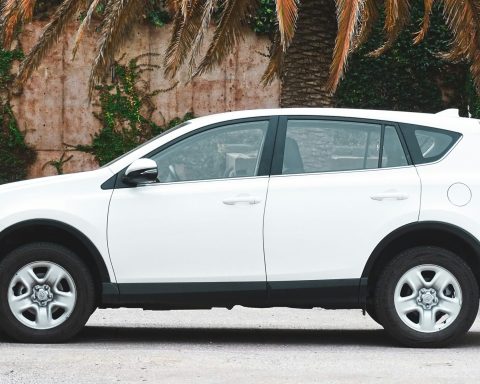 Nada Khan is an Exeter-based NIHR Academic Clinical Fellow in general practice and GPST4/registrar, and an Associate Editor at the BJGP. She is on X: @nadafkhan
Nada Khan is an Exeter-based NIHR Academic Clinical Fellow in general practice and GPST4/registrar, and an Associate Editor at the BJGP. She is on X: @nadafkhan
It all felt like some version of the future of primary healthcare, whether we liked it or not. But is the privatisation of general practice in the UK and a digital-first approach now in doubt? The US health insurance giant, Centene, is leaving the UK healthcare market, with plans to sell off its chain of Operose GP surgeries along the way. As the Financial Times put it, the sales ‘signal an abandonment of Centene’s UK strategy….to create a seamless pathway to private healthcare by buying up taxpayer -funded GP services’ that would refer to its hospitals in England.1
The Centene move comes alongside the collapse of Babylon Health, which sub-contracts the GP at Hand practice with over 100,000 NHS registered patients. GP at Hand provides a digital-first service, and rapidly gained patient registrations under the NHS England patient choice scheme which allows practices to register new patients outside of the practice area. Why hasn’t the approach of Centene and Babylon worked? And what’s the history behind corporate acquisition of GP surgeries?
Privatisation by stealth and failing to make a profit
Why hasn’t the approach of Centene and Babylon worked? And what’s the history behind corporate acquisition of GP surgeries?
Alternative provider medical services (APMS) contracts were introduced at the time of the 2004 GP Contract to allow then Primary Care Trusts to contract with ‘a wide range of providers to deliver services tailed to local needs’, including social enterprises, the voluntary sector, and commercial providers. APMS can benefit certain populations. Social enterprises use this kind of contracting to provide primary care services to homeless people, drug users, or asylum seekers. On the opposite end of the spectrum, though, the APMS system has also allowed corporations like Centene to acquire large numbers of GP practices. In 2006 Allyson Pollock warned against the perils of privatisation of general practice by US healthcare corporations such as UnitedHealth (now known as Optum), one of the first companies awarded an APMS contract.2
In a sometimes dizzying series of takeovers and mergers in 2020 and 2021, Operose Health, the general practice subsidiary of Centene, acquired AT Medics, which ran 37 GP practices in London, to add to its 21 practice portfolio and cement Centene as a major player in the APMS contract stakes. This series of takeovers did not go unnoticed by those opposed to private ownership of NHS services. In 2021, Jatinder Hayre wrote in BJGP Life about the move of Centene and Operose into NHS general practice and warned against the potential consequences to patient care.
Centene is a company, with profits and shareholders holding its bottom line. I’ve written previously in BJGP Life about the use of physician associates (PAs) in Operose clinics amidst claims that Centene uses a strategy of using PAs instead of more expensive GPs to minimise staff costs. Back in 2022, compared to the NHS average, Operose practices employed six times as many physician associates compared to the NHS average, with only 0.6 FTE GPs for every 2000 patients compared to the NHS average of 1.2 FTE GPs, leaving some wondering which senior clinicians were left to adequately support or supervise these PAs in practice.3 We know from tragedies such as the death of Emily Chesterton that inadequate supervision of PAs can lead to patient harm.4
These digital-first GP services have previously been accused of peeling off a healthier, younger patient population. Why hasn’t this approach made money?
With its digital-first offering, it’s not surprising that a startling majority of patients registered with Babylon’s GP at Hand are young. A Care and Quality Commission review in 2019 found that 98.5% of the practice’s population was working aged (aged 20-64), with a low registered population of children, families, or people with chronic disease.5 These digital-first GP services have previously been accused of peeling off a healthier, younger patient population. Why hasn’t this approach made money? An Ipsos MORI evaluation of GP at Hand questioned the appropriateness of the Carr-Hill formula for digital-health services as patients may have better health than the general population, but are higher users of primary care.6 In other words, while GP at Hand patients are younger and healthier than the general population, they are higher users of primary care, potentially due to easier access to a GP, who is literally, at hand, but the Carr-Hill formula does not take into account demand for services. The authors of the Ipsos MORI report note that a review of the Carr-Hill formula and evaluation of appropriate funding models for digital-first offering is needed, but would also require greater transparency on the costs of GP at Hand, something that might be tricky given the ‘potential commercial confidentiality issues of releasing such information’.6
The Centene organisation was reportedly also unable to make profits from its Operose GP practices.1 As a business, they are divesting themselves from international affairs including their Spanish subsidiary, Ribera Salud, in a strategy that looks like a retreat back to focussing on the United States market to maximise revenue. Some healthcare consultants suggested that Centene’s main strategy in running British GP surgeries was to encourage GPs to refer patients to its chain of private hospitals, a tactic that failed to work because Operose surgeries were in less affluent areas far from their private secondary care sites.1
The future
What does this mean for the future of alternative provider medical services (APMS) contracts and its use by big private corporations? We need to examine fully the market (because that’s what it is) of primary care provision here in England, and how the entrance, and exit, of big corporations impact on patients and patient safety. And if you’re interested in this area, and discussions around the privatisation of healthcare in England, I can’t recommend enough this recent article by Peter Roderick and the aforementioned Allyson Pollock.7 Their discussion around the history of the NHS, politicking, and privatisation through different English health care legislation and restructuring makes for unsettling reading, but ends with a call to remember the founding principles of the NHS. Let’s not walk into the privatisation of general practice with our eyes wide shut.
References
1. Plimmer G. Centene to sell GP clinics and hospitals in exit from UK market: Financial Times; 2023 [Available from: https://www.ft.com/content/4f2e1a38-27f5-4e38-9bd8-70f0ae6b206a.]
2. Pollock A, Price D. Privatising primary care. Br J Gen Pract. 2006;56(529):565-6.
3. Griffin S. CQC is reviewing GP service provider’s use of less qualified staff after BBC investigation. BMJ. 2022;377:o1488.
4. Keeley B. Physician Associates, Volume 735: UK Parliament; 2023 [Available from: https://hansard.parliament.uk/commons/2023-07-06/debates/D98F2ABE-7B33-4748-B88E-ED7243469131/PhysicianAssociates.
5. Commission CQ. GP at hand: Inspection report 2019 [Available from: https://www.cqc.org.uk/location/1-6129587714.
6. Evaluation of Babylon GP at hand. London: Ipsos MORI Social Research Institute 2019.
7. Roderick P, Pollock AM. Dismantling the National Health Service in England. Int J Health Serv. 2022;52(4):470-9.
Featured Photo by Damir Kopezhanov on Unsplash






